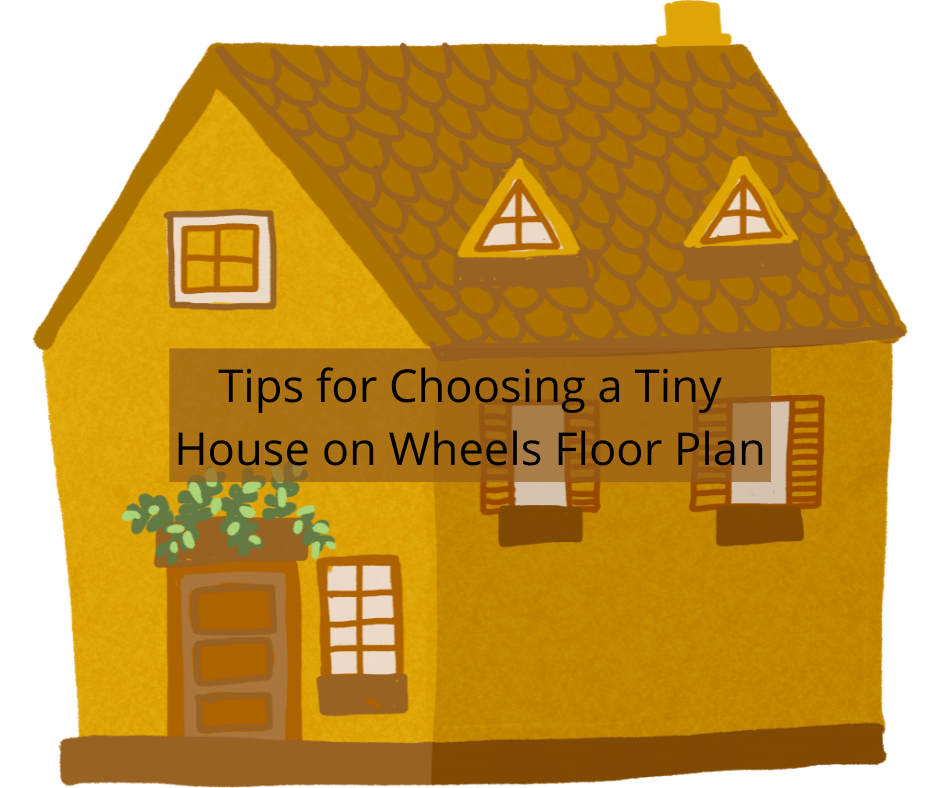A petite, portable tiny house includes a self-sustaining, detached floor. It includes a secure trailer with a bathroom that has a shower and toilet. The kitchen is compact yet functional, including a sink and overhead cabinets. The sleeping area has a convertible bed that turns into a sofa. This mobile home is equipped with all the typical amenities found in a traditional house.
Floor Plan
If you want to own a tiny house on wheels but do not have much experience, you may want to consider a DIY project. You can choose from predesigned floor plans or make some adjustments to fit your family. If you are a family of five or more, you should consider your needs when choosing a floor plan. Here are some tips to help you create the right floor plan. Hopefully, these tips will be helpful!
The tiny house on wheels has a floor plan similar to standard home and can be built on a standard trailer. A typical footprint of this type of house is 24’11” long by 7’10” wide, with a floor area of 196 square feet. Many of these homes have a large living room, kitchen, and bathroom at one end of the house. The floor plan will also include a loft for a child’s bedroom below the living room and a storage loft above the second bedroom.
The next step in creating a floor plan for a tiny house on wheels is to determine your needed systems. You may not need systems plans if your tiny home is low-tech, but you may need them if you plan to include electricity and water. Make sure you have all of these decisions made before you start assembling your tiny house. Instructions will benefit those new to tiny house building and do not have much experience.
While narrowing down your options for a tiny house on wheels can be hard, there are some common factors to consider. Considering your budget, lifestyle, and needs will help you make the best choice. When choosing a floor plan, you should consider what is essential and what you can do without. Once you have your priorities in mind, you can narrow down your choices. Decide on the things essential to you and decide if you want to compromise on anything else.
Amenities
Whether you choose a standard plan for a tiny house or a custom design, the quality of the amenities will impact the overall cost. However, there are a few ways to reduce costs and maximize convenience. Using recycled materials and dual-purpose furnishings are two great ways to save money on your tiny home. You can find a plan that fits your budget and your needs. But make sure you follow all the guidelines of the plan, including the manufacturer’s warranty.
Cost
If you’re considering buying a tiny house on wheels, there are many factors to consider when calculating the cost. Depending on your lifestyle, these homes can cost anywhere from ten thousand dollars to more than $180,000. The average cost of a tiny house is around thirty to forty thousand dollars. Though some people are surprised by the price, you can find a plan to fit your budget and needs.
There are two types of tiny houses: those that are on wheels and those that are off-grid. Off-grid houses are off-the-grid, meaning they don’t use traditional utilities such as water, electricity, and sewer. Some trailer-style tiny homes connect to campgrounds, while others are built on a foundation. You should always plan for maintenance and repair costs. It shouldn’t break the bank, but it will add up fast!
If you’re building your own tiny house, you’ll want to consider reclaimed wood. Barns and other exterior buildings often have reclaimed wood that you can use for construction. Contact farms and properties and ask if you can reuse their materials for your tiny home. You can also choose a design based on a dollhouse. These can be custom-made or modified to suit your style and budget.
The cost of a tiny house on wheels varies depending on its construction method. You can choose to buy a pre-fabricated kit or work with an architect to custom-build your home. If you don’t want to build it, you can use a short-term construction loan to finance the project. These loans can be repaid through a mortgage or personal loan. But you should always consult with your lender before taking out a loan.
Construction Process
The construction process for a tiny house on wheels involves building the structure and securing it to the trailer. There are several steps to building a tiny house, including framing the walls and insulating them. Whether you choose to use conventional framing or an advanced method, you will need to choose a material for the floor and ceiling. For the roof, you should stick to a simple design.
Before installing the walls, you must have the wiring installed. You must ensure that the wiring and switches are all functioning properly. If you are planning on installing appliances, you will need to read the local electrical codes and get professional help. Also, you need to make sure the electrical and plumbing connections are safe, as they will be connected to the tiny house’s electrical system. Once the wiring is installed, you should consider installing solar panels to generate electricity for the tiny home.
The construction process for a tiny house on wheels depends on how much money you want to spend on it. Some builders choose to hire a professional to build their tiny homes. They have years of experience and know-how and can get the job done faster than you could. However, you can save money by tackling the project yourself and also source furniture, appliances, and interior materials secondhand. However, it depends on your skills and experience.
After choosing a model that meets your needs, you can choose from various options. You can also customize your tiny home to fit your budget and skill level. If you are a DIYer, many different kits can make the job a little more difficult for you. There are also a variety of accessories that will make the construction process easier for you. This will save you money and give you the satisfaction you need.
Place to Park a Tiny House on Wheels
Finding a safe, legal place to park a tiny house on wheels can be challenging, particularly in urban areas. Most cities and townships only have a limited number of spaces for parking and lack the land to accommodate the home. However, rural areas are more plentiful and provide more options. You can even ask family members or friends for their land. This option is safer than relying on public spaces and can give you a sense of security.
Tiny house communities have sprung up worldwide to provide a community where you can park your house. Some communities offer land for rent, while others offer work share opportunities or trading spaces. While these communities can be expensive, they can be a great way to get your tiny house off the ground and on the road. You can also find an open-minded community who will help you park your tiny house.
If you cannot find a spot to park your tiny house on wheels, consider buying a plot of land. If you plan to use your tiny home as a permanent residence, you’ll have to deal with city building inspectors and municipal property owners. Alternatively, if you’re willing to work as a property keeper, you can park your tiny home on the land of your employer. However, you should still inspect the inside of your home before hitting the road.
The most difficult part of tiny house living is finding a place to park it. Many people have turned to HGTV programs to help them find locations for their tiny house on wheels. As a result, online forums are filled with requests for tips on finding a tiny house-friendly place to park. Here are a few ideas. If you want to live in a tiny house on wheels, find a location that’s accessible and close to your neighborhood.
I’m Theodore, and I love tiny houses. In fact, I’m the author of Tiny House 43, a book about tiny houses that are also tree houses. I think they’re magical places where imaginations can run wild and adventures are just waiting to happen.
While tree houses are often associated with childhood, they can be the perfect adult retreat. They offer a cozy space to relax and unwind, surrounded by nature. And since they’re typically built on stilts or raised platforms, they offer stunning views that traditional homes simply can’t match.
If you’re looking for a unique and romantic getaway, a tree house tiny house might just be the perfect option.
















